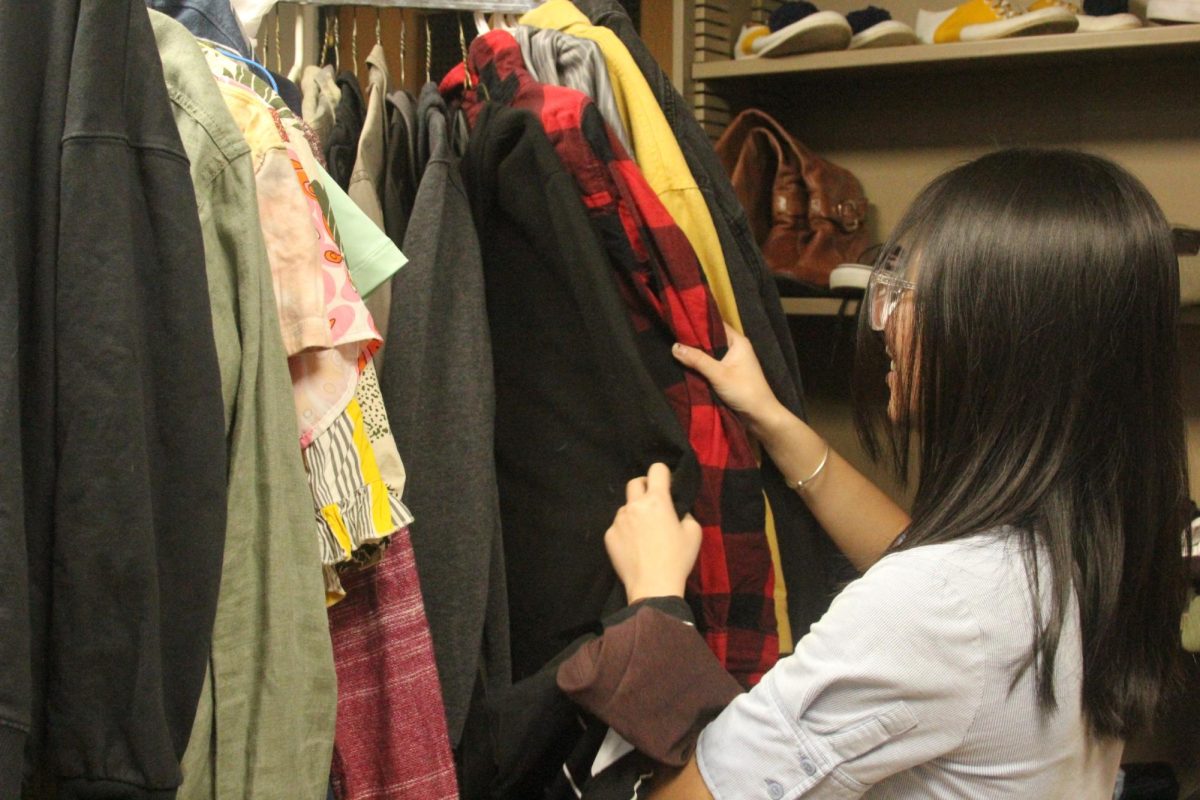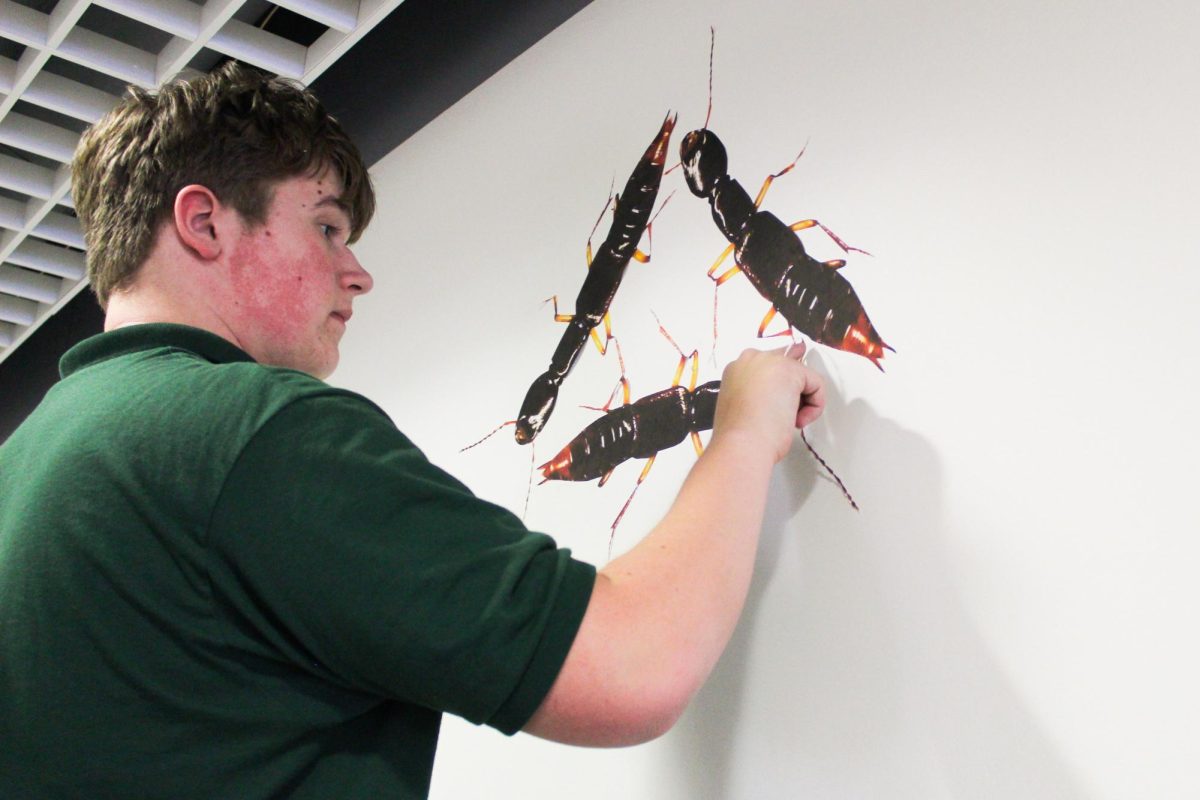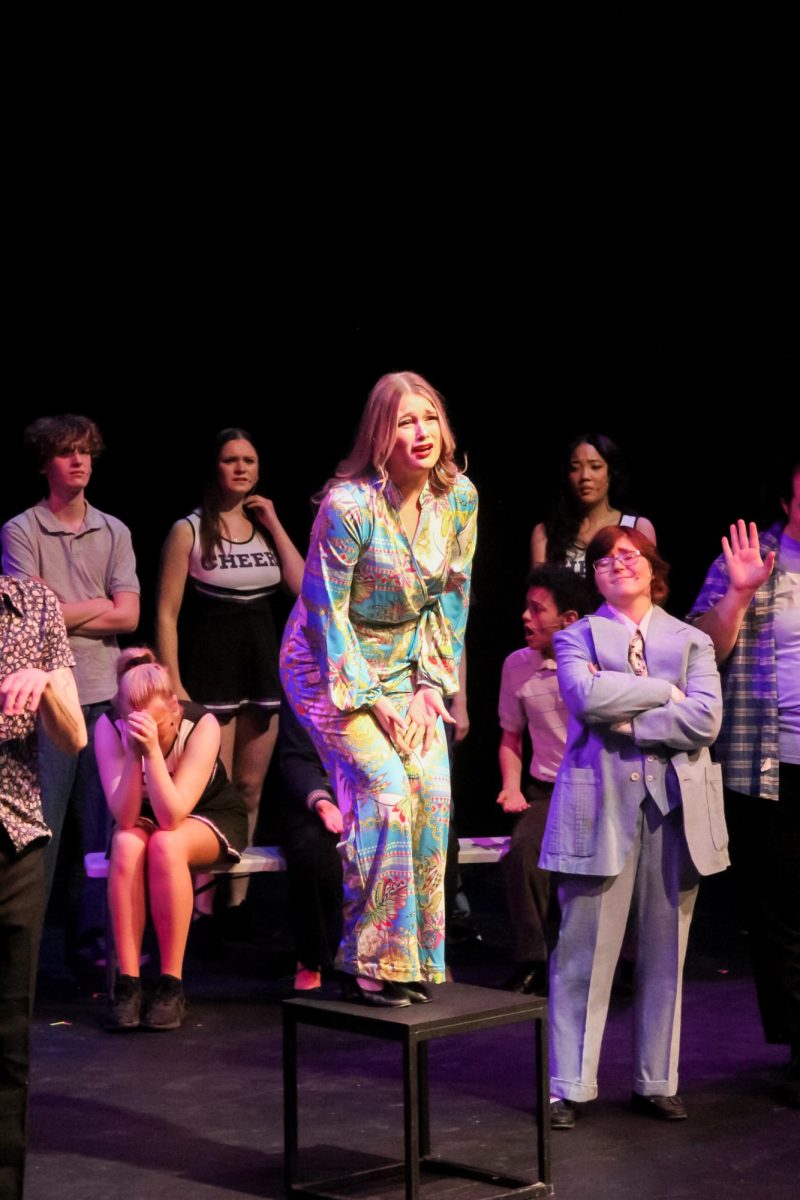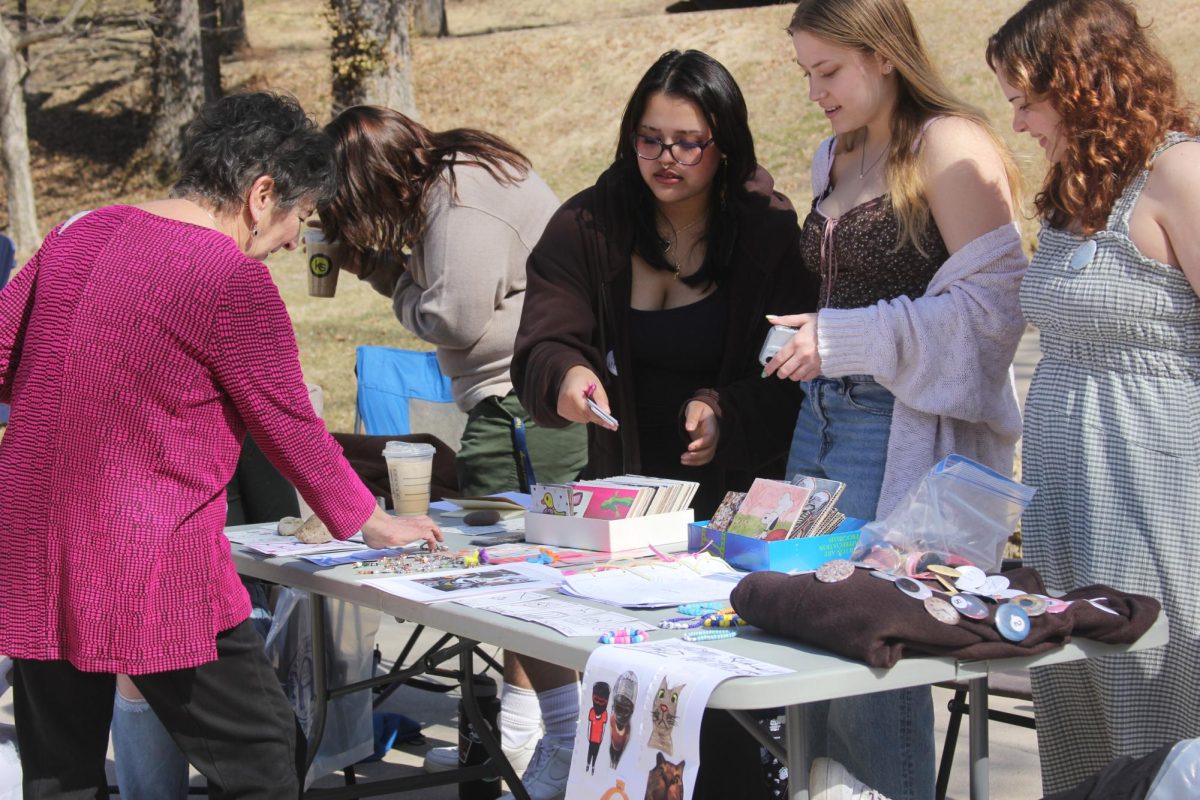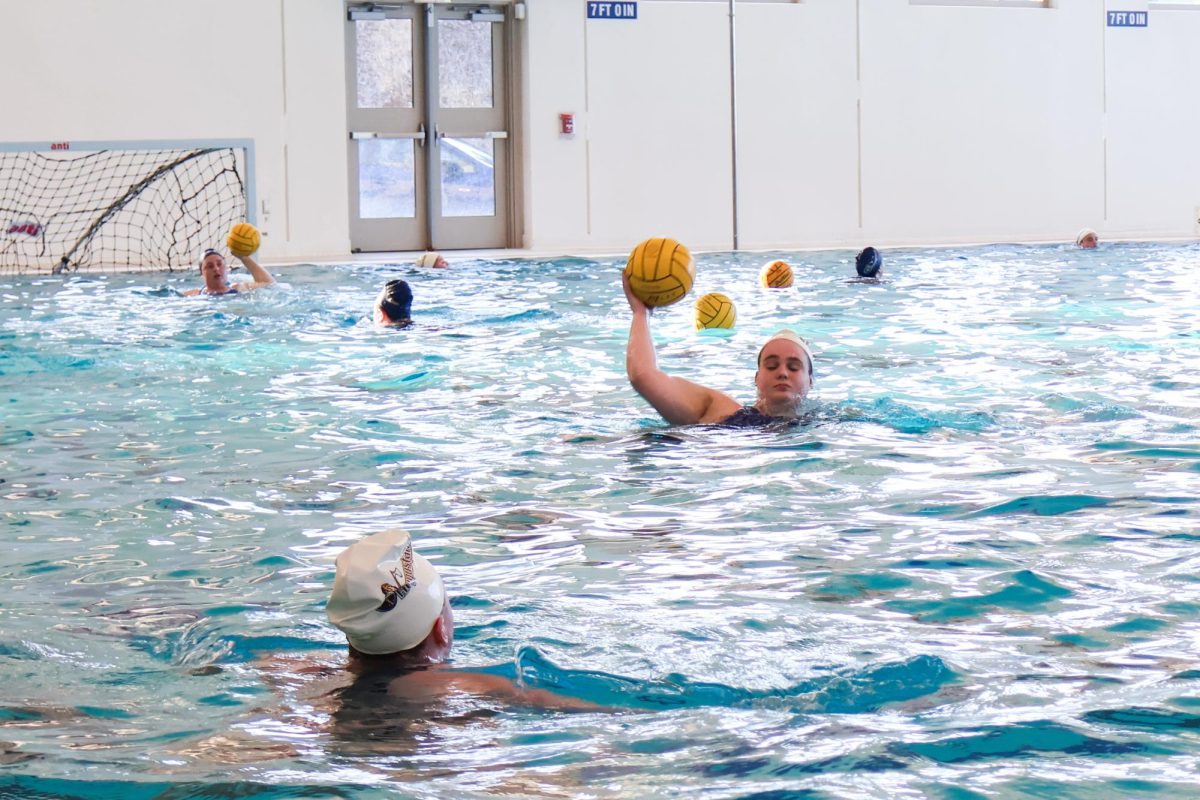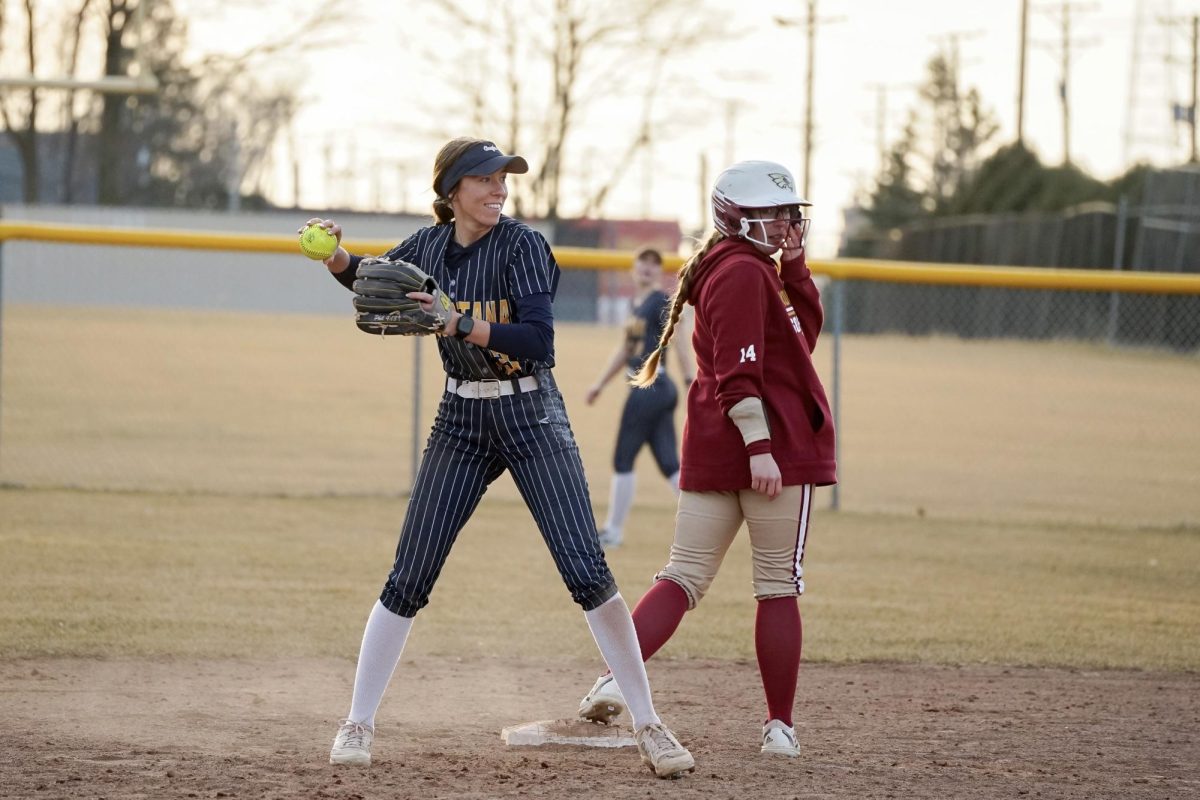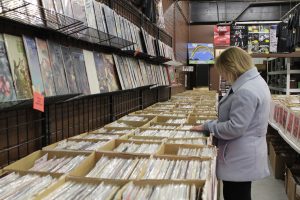
Photo by Linnea Ritchie.
Music technology has gone from vinyl to cassettes to CDs to MP3s and now back to vinyl, which professor of music James Lambrecht said is a result of a desire for live-sounding music.
“I think what vinyl does is it gets us closer back to reality and live performance,” said Lambrecht. “I think people are starting to crave again getting away from technology and getting back to what’s real.”
Vinyl record sales have been on the rise since 2006 with 9.2 million albums sold in 2014 alone, which was six percent of the total album sales for the year. And while vinyl sales continue to increase, digital downloads have decreased. In 2014, digital download purchases of albums dropped nine percent and download purchases of songs dropped 12 percent, according to Time Magazine.
But not all vinyl purchases are by older generations nostalgic for classic music. Bob Herington, owner of Ragged Records, a downtown Davenport store that buys, sells and trades new and old vinyl records, said more and more younger people are buying vinyl.
“The past three or four years seemed to be people more mid-twenties and up that were buying vinyl,” said Herington. “And I’ve noticed in the past year now that it’s a lot more teenagers, college-age sorts, kind of dropping down in the age as far as the interest in it.”
Lambrecht said he was surprised to learn that college-aged students listen to vinyl, especially with the technology of instant downloading and MP3s.
“I used to always make fun of your generation and previous younger generations at school here because I always thoughts they had no idea what a record was,” said Lambrecht.
Vinyl records have a more natural sound, Lambrecht said, which could be a reason why people are returning to the older way of listening to music. But vinyl’s recent popularity could also have to do with the loss of album artwork in the digital age.
“It’s a square foot where you could say something in terms of your art and describing what the album is going to be all about,” said Lambrecht.
Digital downloading has also taken away the physicality of music.
“Look at a ‘Thriller’ album and you can see the beat patterns in the vinyl tracks and there’s a visual connection to the vinyl,” said Lambrecht. “You can just sit there and watch it and you hear what you see. You can’t do that on a computer.”
Senior Paul Landahl, who collects vinyl records, said he feels like an active listener when he listens to vinyl.
“It kind of forces you to sit there and listen,” said Landahl.
The first form of a flat disc record was first introduced in the 19th century, called a “78,” meaning it rotated 78 rotations per minutes.
“That was really fast, but they were so fast, that you couldn’t put much music on there or recorded voice or anything else you were recording because it would go through the tracks really quickly,” said Lambrecht.
Records’ rotations per minute were slowed down as technology increased, resulting in 45s and 33 and 1/3 rpm vinyl records, which allowed more music to fit on each side of the disc.
“You take a wax kind of an imprint, and what happens is you give it a sound input and that input goes to a needle that vibrates that sound,” said Lambrecht. “And so it vibrates up and down, side to side, and creates a groove of uneven kinds of shapes in that groove that represent the sound of what’s happening.”
Different types of music show different types of grooves on vinyl records, which are made out of oil.
Digital technology began in the 1970s when engineers invented a way to digitize sound waves, and by the 1980s, the first digital recordings began appearing.
“But what we noticed was, initially, that the sound was cleaner, more pristine, and many people liked that because the records, for instance…have an inherent background sound, a scratching sound often times as the needle wears or as the record itself wears,” said Lambrecht. “But the problem with digital technology, is that it’s so clean and so pristine, it kind of distorts certain frequencies in my opinion and other people’s opinions so it sounds higher, it sounds brighter and sharper and clearer, but it doesn’t sound natural.”
For example, a digitally recorded voice will sound higher when played back.
But fast forward to the 2000s and the idea of a physical form of music becomes unpopular while MP3 files and digital downloads become the most popular form of music. Digital music is stored on computers, phones and other devices, and now most computers don’t even come with a disk drive for CDs anymore.
Yet Lambrecht said that while digital music sounds more pristine, it doesn’t have the same “human warmth” of vinyl, despite the environmentally friendly idea of digital downloading.
“From that perspective, I applaud,” said Lambrecht. “But it’s just we’re missing something, aren’t we? It’s almost like saying, ‘Hey, we’re never going to read books in a library ever again; we’re only going to read them on our iPads or computers.’”
For Landahl, collecting vinyl is not only a hobby but also a way to collect classic music from the decade it was made in that also has more album artwork that a cassette.
“I don’t think there’s such an active part and (cassettes) don’t have the same appeal to me,” said Landahl. “Like when you open up a cassette, it’s not the same as when you take the record out and you can see all the notes.”
Herington agrees that the physicality of vinyl could be what’s bringing more and more people into his store.
“It’s definitely more fun than just streaming something online or downloading it—downloading air,” said Herington. “Basically, if you’re downloading, it’s different to hold something in your hand or read minor notes. It’s more interesting.”
And as Lambrecht adds, experiencing music live is the best way to listen, but vinyl is the bridge that links music back to a more natural listening experience.
